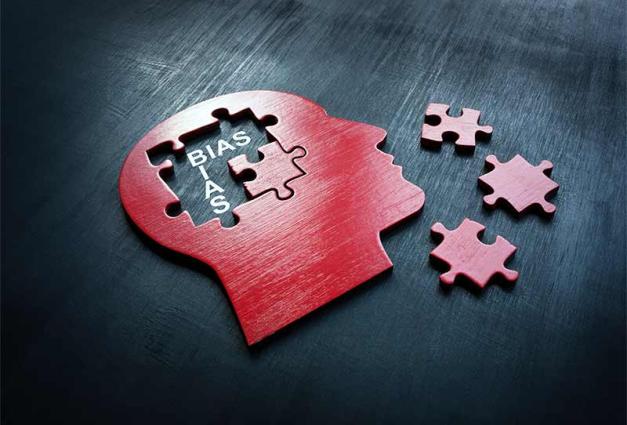In the wake of economic recessions, racial disparities can increase dramatically. Take, for example, the recession that followed the COVID-19 pandemic. During this period, Black and Latina/o Americans lost their jobs at twice the rate of White Americans, and were more prone to housing-related hardships like foreclosure.
Emerging alongside the amplification of these inequalities, racial minorities experienced an abundance of ethnic stereotypes by civilians, politicians, and a wide array of media sources to justify these increasing disparities. Stereotypes targeting Black Americans were used to justify police shootings and to oppose Black Lives Matter demonstrations; stereotypes targeting Asian Americans were used to bolster xenophobic travel and immigration policies in the context of COVID-19; and stereotypes targeting Latina/o immigrants were used to justify restrictive changes to immigration policy.
In response to these patterns, my colleagues and I started to ask: To what extent were these upticks in stereotyping and discrimination specifically driven by Americans' perceptions of economic threat?
To explore this question, we aimed to test whether economic threat, or as we called it, scarcity, led to increased stereotyping of Black Americans. We used an experimental approach in which we produced scarcity in our laboratory with a simple task: participants were recruited to play a financial game, and learned that the funds available to them would be decided randomly and that, unfortunately, by chance, they would receive only a small portion of the available funds. We compared this group to another group who received the full amount of available money. The goal was for people experiencing scarcity to feel like they didn't have as much money as they could have had.
After experiencing this situation, non-Black Americans completed a questionnaire measuring their reported knowledge of Black American stereotypes. We wanted to assess how easily these stereotypes came to mind for people. The scarcity group reported more knowledge of these stereotypes than the group getting the full amount of money, specifically regarding harmful, negative stereotypes like being poor, uneducated, dangerous, and threatening. These results supported our thinking that economic scarcity alone was enough to increase harmful stereotyping, and were consistent with the idea that stereotypes operate, in part, to justify discrimination.
In our subsequent studies, we wanted to know if this stereotyping occurred automatically, outside of people's conscious awareness or control. To get at this subtlety, we used a unique task that allowed us to get a picture of each participant's mental image of a Black man.
To get an idea of this task, imagine that your best friend wanted to create a sketch of your face, without looking at any pictures. Your friend would maybe start by thinking of your eyes, jawline, lips, ears, etc. If we got all of your friends together, had them all create a sketch in this way, and somehow combined all the sketches into one average, we would likely end up with a pretty accurate representation of your face.
We applied a similar technique in this study by having people sketch their representation of a Black man's face. Instead of drawing, we had people pick from pixelated face images on a computer which ones they thought best represented a Black man's face. At the end, we combined their choices into one average.
Importantly, before doing this task, we split people into two groups just like in the first study. We were then able to compare the average face from the non-scarcity group to the face that the scarcity group created. When we showed these two faces to a completely new group of participants, they reported that the face created under conditions of scarcity appeared significantly more threatening and hostile, as well as less intelligent and more financially poor. This finding was strong, but we wanted to replicate it to make sure we could trust our conclusions. We ran this study again, and indeed found the same results.
Collectively, these findings suggest that when resources are scarce, people's stereotypes are not just more easily accessible, they can also creep into the way we actually see each other, in ways that are associated with intergroup harm and anti-minority bias.
Overall, our research has important implications for understanding how stereotypes contribute to the amplification of racial disparities during economic downturns. It also highlights the need to find ways to mitigate the effects of economic scarcity on stereotyping and discrimination. These could include education programs that promote awareness of the ways in which economic scarcity can lead to increased stereotyping, as well as policies that address the underlying economic inequities that contribute to these disparities in the first place.
For Further Reading
Berkebile-Weinberg, M. M., Krosch, A. R., & Amodio, D. M. (2022). Economic scarcity increases racial stereotyping in beliefs and face representation. Journal of Experimental Social Psychology, 102, 104354. DOI: 10.1016/j.jesp.2022.104354
Krosch, A. R. (2022). Threat alters race perception to facilitate discrimination. Trends in Cognitive Sciences, 26(11). DOI: 10.1016/j.tics.2022.08.017
Quist, R. M., & Resendez, M. G. (2002). Social dominance threat: Examining social dominance theory's explanation of prejudice as legitimizing myths. Basic and Applied Social Psychology, 24(4), 287-293. DOI: 10.1207/S15324834BASP2404_4
Michael Berkebile-Weinberg is a PhD Candidate in the Social Psychology Program at New York University. He studies social issues at the intersection of individual and systemic processes.




